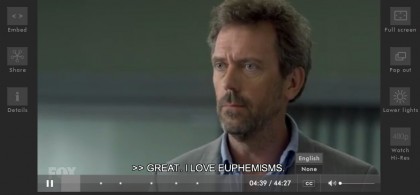
Normally, I tend to think that most regulations are bad. In a free market, businesses should be allowed to operate with a wide degree of latitude. At the same time there is a pragmatic part of me that understands there can be exceptions to this. Everyone should have the right to free speech, but that doesn’t make it right to run cigarette ads on Saturday morning cartoons or to claim that you’re a Doctor when you only bought your degree from an Internet spammer.
For the most part, the television world has been forced to accept reasonable restrictions in exchange for the public bandwidth they use to deliver their content. In the Internet world though, the content rules are more like the old west because consumers are opting into the service by paying for it. As long as you have the quickest draw, your behavior doesn’t matter as much and so far companies like Netflix have been more concerned about digital market share, then doing what’s right.
Maybe it’s because internet audiences are still small compared to television or it could be that it takes time for rules and standards to develop and emerging markets don’t tend to care about these things. Whatever the reason though, there are parts of the television experience that aren’t making the jump to the internet.
Specifically, I’m talking about closed caption data. For years, television studios have been legally required to provide this information, so that people who are hard of hearing can also enjoy the content. While there are some technical issues associated with adding this kind of data to a video file, technology is at a point where you’d think it should easily support this. The Matroska container for example, is able to include optional sub-title information along with video and audio data. Alternatively, because online delivery can microstream to people, files with the embedded sub-titles could made available to viewers who opted into them. This would involve keeping multiple copies of the same movies though and so far the digital movie industry hasn’t wanted to bear this cost.
I would think the PR value alone would be enough to support the capability in all the major delivery and container formats. There’s no reason to have separate packages. The file/bandwidth increase is negligable. There is nothing keeping the major producers from making subtitles a part of their standard process in transfer to the net. User generated content is another matter. But voice recognition should take care of this by now.